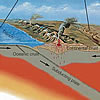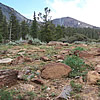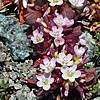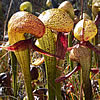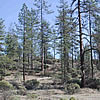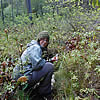Klamath-Siskiyou Serpentines
Stark Beauty
Stark and toxic, diverse and rare, serpentines are a land of contrasts. Formed within the earth's mantle, serpentine rocks found their way to the surface. On serpentine soils, a unique flora evolved especially adapted to survive the severe hardships of drought, heavy metals, and nutrient stress. Complex islands of endemism and rarity developed in isolated plant communities on the severe landscapes.
The Klamath-Siskiyou Mountains of northwest California and southwest Oregon are the largest serpentine area in North America. Celebrating Wildflowers features the unique plant communities on the National Forests of the Klamath-Siskiyou Mountains. Discover sub-alpine communities, Jeffrey pine woodlands, and Darlingtonia wetlands. Learn how we are conserving these communities. Enjoy the stark beauty of the serpentines.
Geology
Where the Earth's crust collides, serpentine is born
Serpentine Soils and Plant Adaptations
How the soils formed and the plants adapted to tolerate the extreme serpentine conditions
A Center of Diversity, Endemism, and Rarity
Plants that occur in this geographic area are found nowhere else in the world
Plant Communities
From Woodland to Wetland: The Diversity of Serpentine Plant Communities
Conservation
Conserving the Botanical Richness of Serpentine Communities
More Information
Related links and publications



